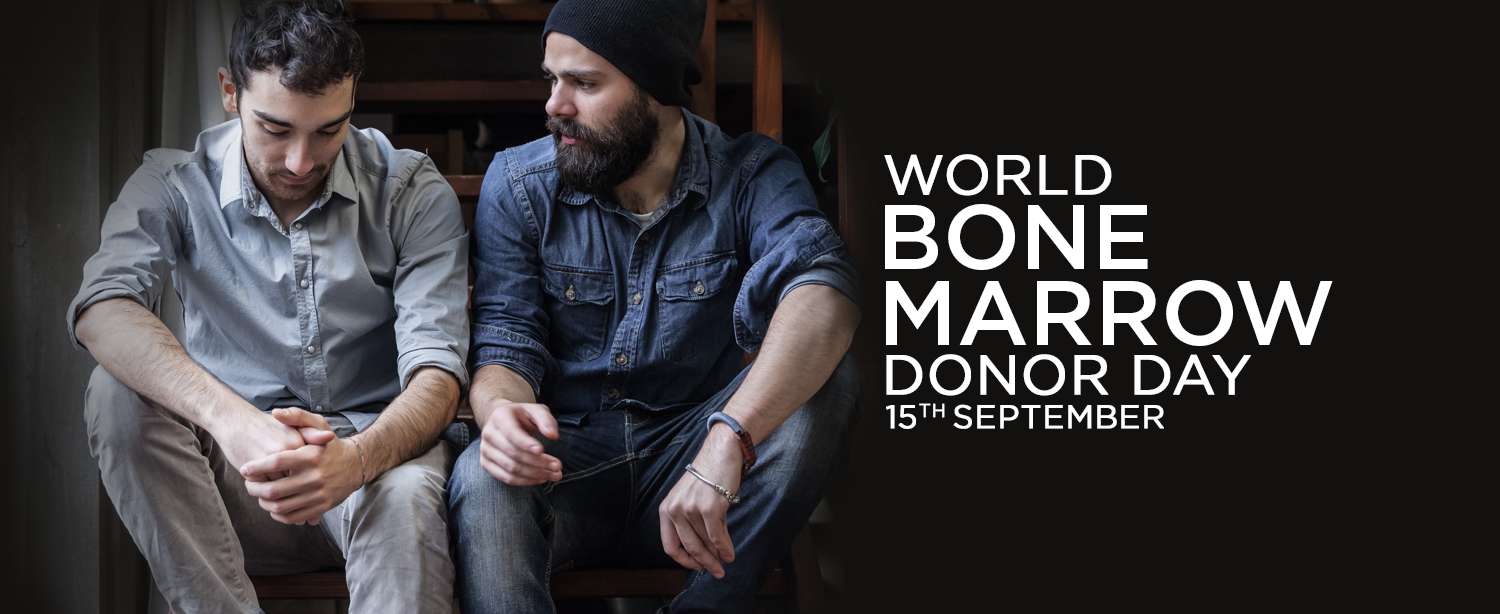What is a bone marrow?
Bone marrow is a soft, spongy material found in your large bones. It makes more than 200 billion new blood cells every day, including red blood cells, white blood cells, and platelets. But for people with bone marrow disease, including several types of cancer, the process doesn’t work properly. Often, a bone marrow transplant is a person’s best chance of survival and a possible cure.
What you need to know about bone marrow transplants
Bone Marrow Transplant is transfusing into the patient blood stream HLA matched blood Stem Cells capable of developing into red blood cells, white blood cells and platelets, replacing a transplant patient diseased or damaged Stem Cells. In India every year about 2 lakh patients require this form of treatment. Unfortunately HLA matched Donors are not easily available. This means that more than 1, 40, 000 patients are not given the best possible treatment. If unrelated but HLA matched Donors are made available then transplants can be done & will provide hope to many of these patients. A Bone Marrow transplant is the process of infusing healthy Marrow into a person to replace diseased or damaged Bone Marrow. The original Marrow is eradicated using high dose chemotherapy or radiation.
Only about 30% of people who need a transplant can find an HLA-matched donor in their immediate family. For the remaining 70% of people, doctors need to find HLA-matched bone marrow from other donors. Register to be a bone marrow donor, help save someone’s life.
The bone marrow donation process:
There are two methods used for donation – PBSC and Bone marrow donation.
Peripheral blood stem cell donation (PBSC) donation is a nonsurgical procedure and the most common way to donate. For 5 days leading up to donation, you will be given injections of a drug called filgrastim to increase the number of cells in your bloodstream that are used for transplant. Some of your blood is then removed through a needle in one arm and passed through a machine that separates out the blood-forming cells. The remaining blood is returned to you through the other arm. Most donations are done by this method. The process takes about 3 hours and may be repeated on a second donation day. Side effects include headaches, bone soreness, and discomfort from the needles during the process.
Although less common, some donors may be asked to undergo a Bone marrow donation process. It is a surgical, usually outpatient procedure. You will receive anesthesia and feel no pain during the donation. Doctors use a needle to withdraw liquid marrow from the back of your pelvic bone. Donors usually go home the same day of the surgery and can return to normal activity within 1 week. Common side effects include nausea, headache, and fatigue, most often related to the anaesthesia.
When bone marrow donation is crucial:
- Each year, leukaemia kills more children than any other cancer.
- 70% of patients in need of a marrow transplant do not have a matching donor in their family.
- A bone marrow transplant can save the life of someone battling leukaemia, lymphoma, or another blood cancer.
- Radiation and chemotherapy treatments are often successful in destroying the cancer cells, however, in the process; they may also destroy the patient’s healthy cells and Bone Marrow.
Things a donor should know:
There are also several misconceptions about Bone Marrow Transplants that prevent people from registering themselves as voluntary donors. First of all, the sample for the HLA typing is taken from the mouth, a swab is used to remove a small soft tissue from the inside of the cheek, so not even a prick is required. This is saved in their records to match any future bone marrow transplant requirement.
Once you are found to be a match, you are given a full counselling session and have to go through a complete medical check-up. Unlike, as the name might suggest, the donor’s stem cells are removed from the peripheral blood and not by piercing the bones. The actual removal of the stem cells is done at a medical facility under complete medical supervision.
Myths and facts:
Myth: Stem cell Donation involves a lengthy recovery process.
Fact: Due to taking the drug filgrastim, PBSC Donors may have symptoms such as bone or muscle pain or fatigue in the five days leading up to donation. These symptoms nearly always disappear one or two days after donating, and the Donor is back to normal. Stem cell Donors can expect to feel fatigue, some soreness or pressure in their lower back and perhaps some discomfort walking. Stem cell Donors can expect to be back to work, school and other activities within one to seven days.
Myth: Donating stem cells is dangerous and weakens the donor.
Fact: Though no medical procedure is without risk, there are rarely any long term effects from donating. Only 5% or less of the donor’s stem cells are needed to save a life. After donation, the body replaces the donated stem cells within four to six weeks.
Myth: Donors have to pay for the transplant.
Fact: Donors never pay for the bone marrow transplant process. The patients insurance or the patient bears the expenses.
Myth: Bone marrow donation is time consuming.
Fact: In most cases, donors are asked to donate within one to three months after receiving a request. For peripheral stem cell donations, the donor must visit a medical office for filgrastim injections for the five days before the procedure, and then the donation day . Donors can return to their normal schedule within a few days. The bone marrow extraction process takes one to two hours, and donors may stay overnight at the hospital. Even so, most are able to return to their normal schedule within 1 to 2 days.
Meet out experts at Kokilaben Dhirubhai Ambani Hospital to know more about Bone marrow transplants and donations. Please fine below link:


